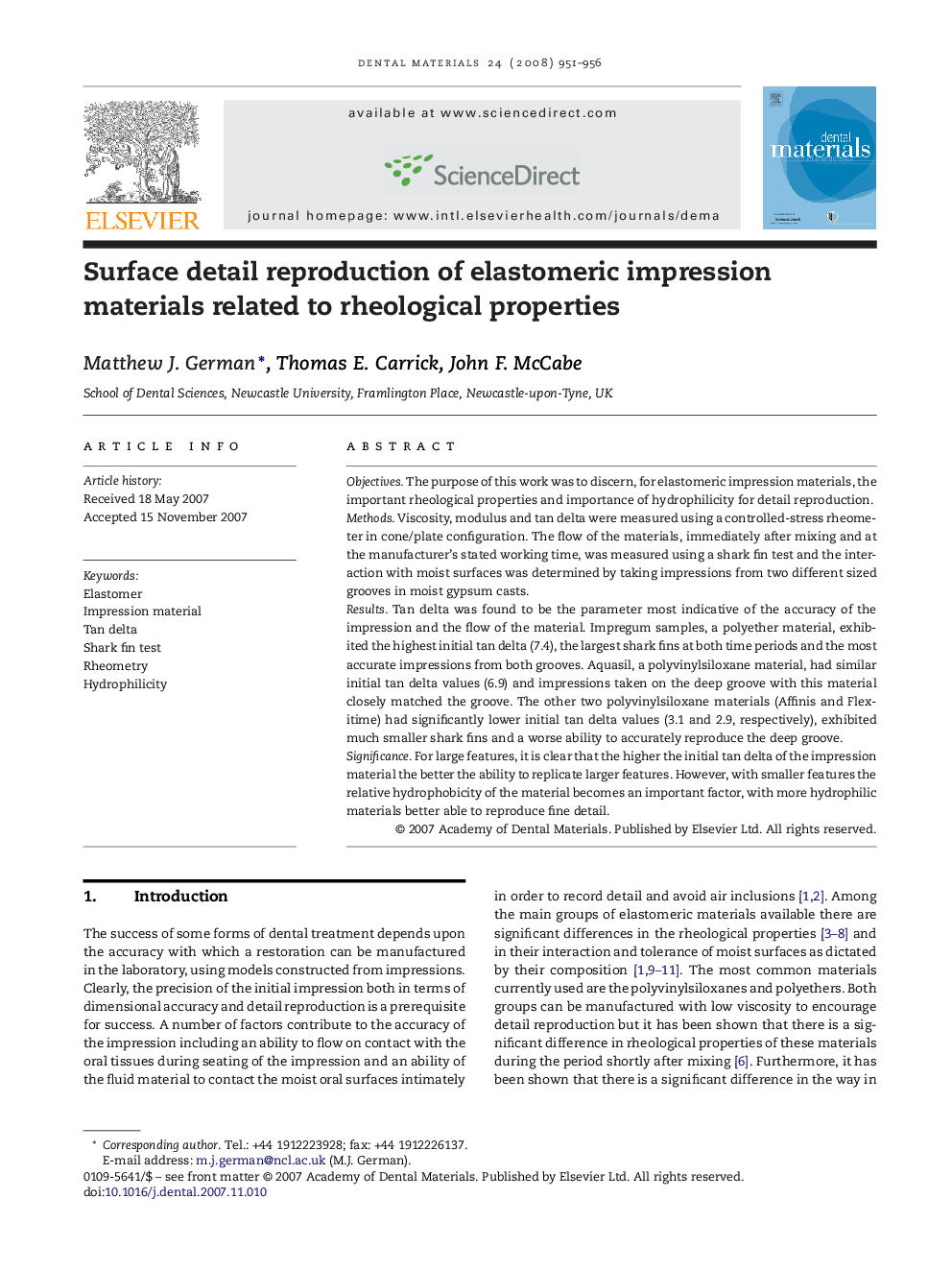| Article ID | Journal | Published Year | Pages | File Type |
|---|---|---|---|---|
| 1422991 | Dental Materials | 2008 | 6 Pages |
ObjectivesThe purpose of this work was to discern, for elastomeric impression materials, the important rheological properties and importance of hydrophilicity for detail reproduction.MethodsViscosity, modulus and tan delta were measured using a controlled-stress rheometer in cone/plate configuration. The flow of the materials, immediately after mixing and at the manufacturer's stated working time, was measured using a shark fin test and the interaction with moist surfaces was determined by taking impressions from two different sized grooves in moist gypsum casts.ResultsTan delta was found to be the parameter most indicative of the accuracy of the impression and the flow of the material. Impregum samples, a polyether material, exhibited the highest initial tan delta (7.4), the largest shark fins at both time periods and the most accurate impressions from both grooves. Aquasil, a polyvinylsiloxane material, had similar initial tan delta values (6.9) and impressions taken on the deep groove with this material closely matched the groove. The other two polyvinylsiloxane materials (Affinis and Flexitime) had significantly lower initial tan delta values (3.1 and 2.9, respectively), exhibited much smaller shark fins and a worse ability to accurately reproduce the deep groove.SignificanceFor large features, it is clear that the higher the initial tan delta of the impression material the better the ability to replicate larger features. However, with smaller features the relative hydrophobicity of the material becomes an important factor, with more hydrophilic materials better able to reproduce fine detail.
